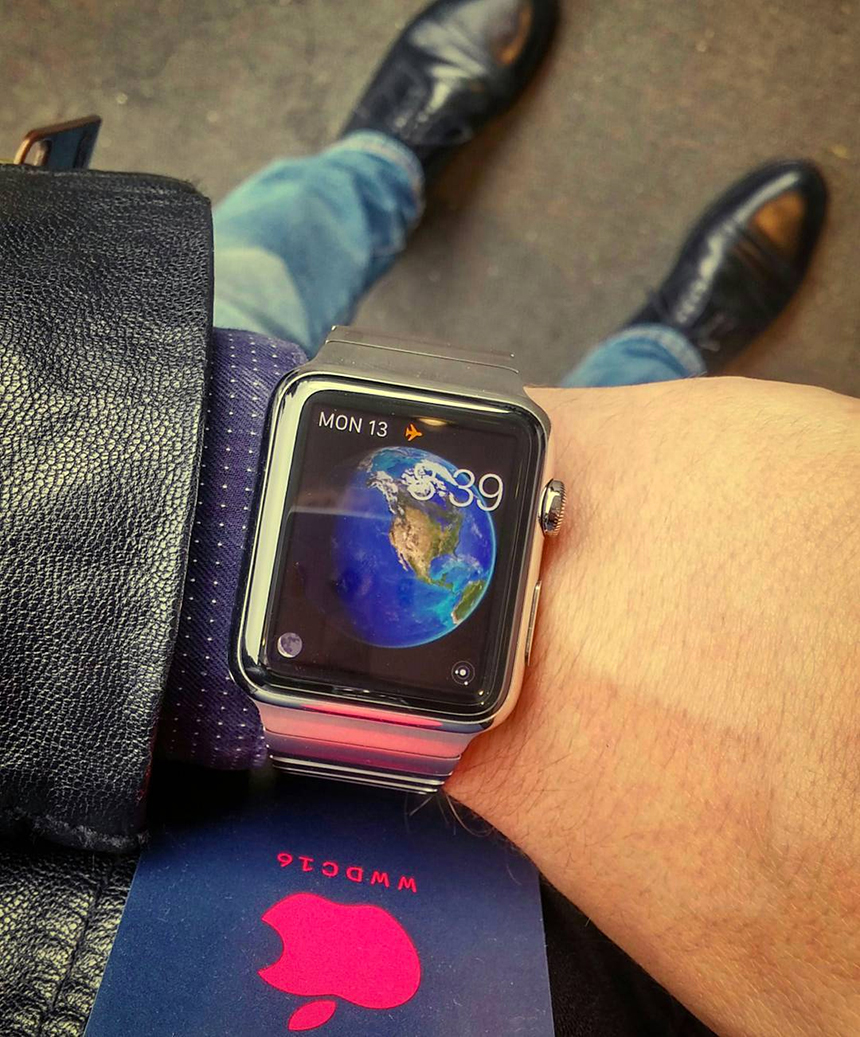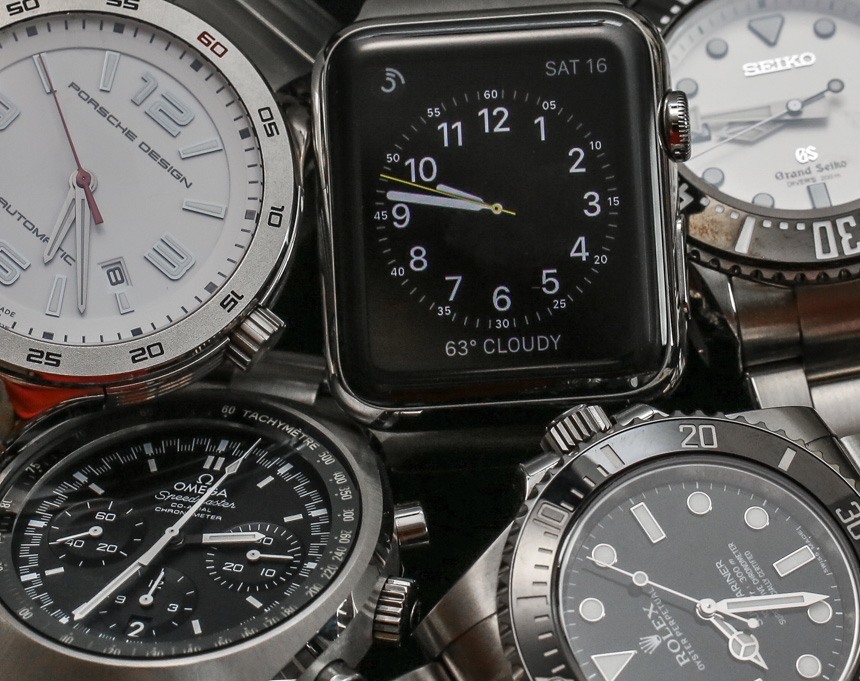
Fitness and timing are huge parts of what the Apple Watch is being used for by consumers. Apple hasn’t gone so far as to suggest that using an Apple Watch is good for your health, but their data seems to suggest that one of the primary daily use cases for the Apple Watch is fitness tracking. Eventually (in my opinion), this will translate into the Apple Watch and other smartwatches being small wearable doctors who constantly monitor both activity and your body’s vital signs. We aren’t quite there yet, but Apple is both focused on collecting data through the Apple Watch, and also making that data meaningful and useful for the consumer.
A good example is their plan to further “gamify” activity tracking. Native to the Apple Watch will now be the ability for people to compete with a select group of people when it comes to completing their daily activity rings. Apple and others have proven that if you turn fitness goals into a sort of competitive game, it will further motivate many people to be active – which is part of a larger goal of promoting good health.
This includes a new Apple Watch application called Breathe, that will guide you through a 1-5 minute long deep-breathing relaxation session through either the pulsations on the screen or light taps from the watch’s taptic engine. Apple has also mentioned modified versions of activity tracking specially developed for people with disabilities such as people in wheelchairs, which we find quite interesting.
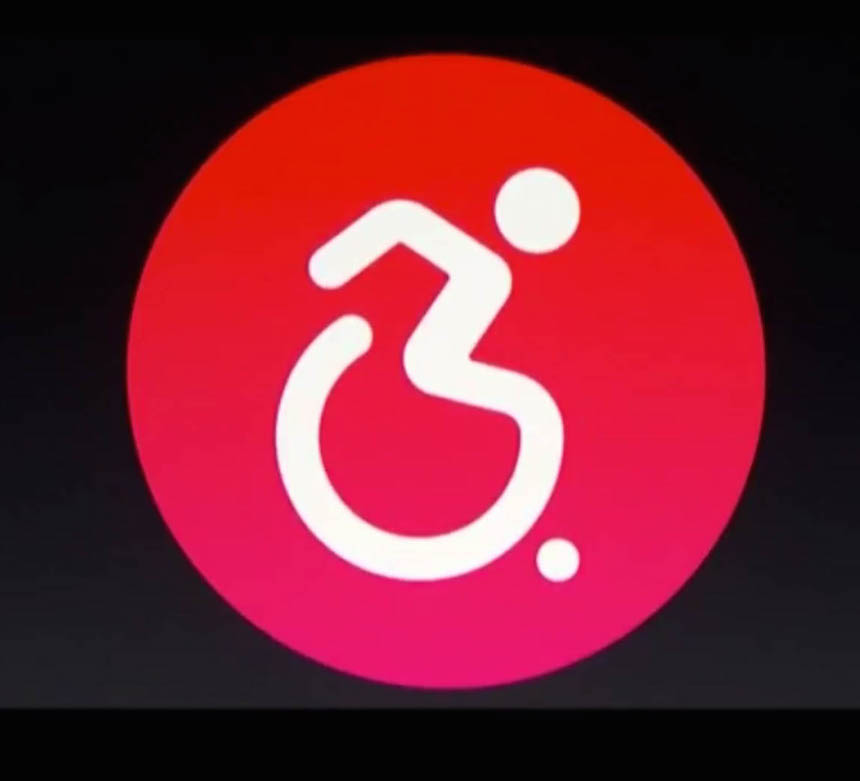
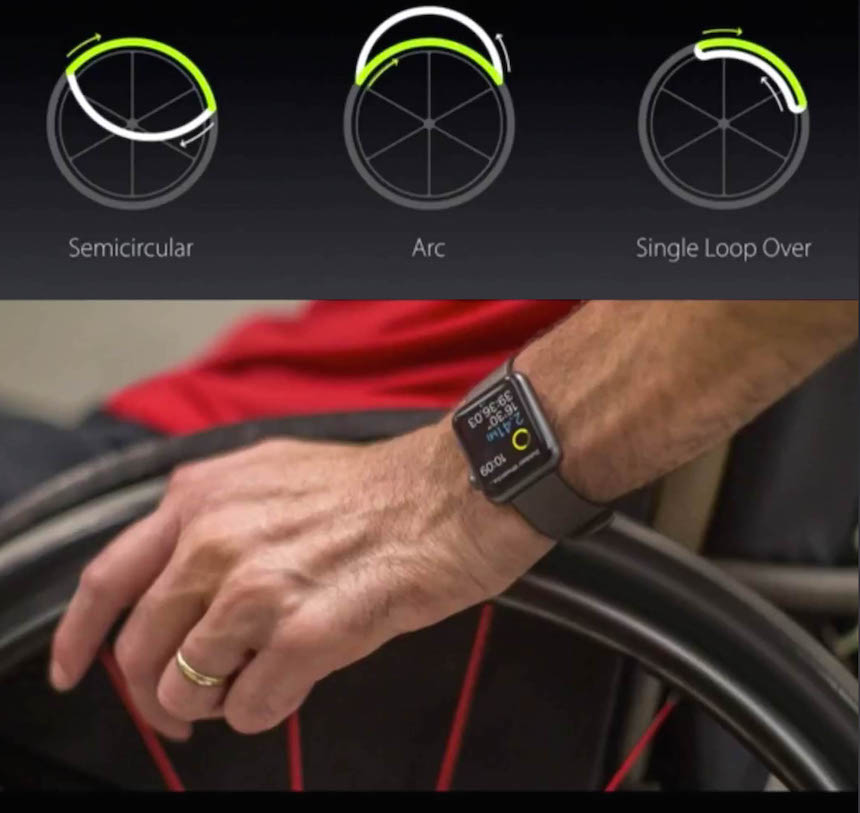
Part of the focus on speed and efficiency are new systems within Scribble, and being able to reply to messages or notifications with ease thanks to some new, to-the-point, but also rather creatively written preset replies. So many of the improvements in the Apple Watch contained in WatchOS 3, as I mentioned, are about bringing out features that may already exist, but making them more refined, more useful, and more accessible to use without as much effort from the user.
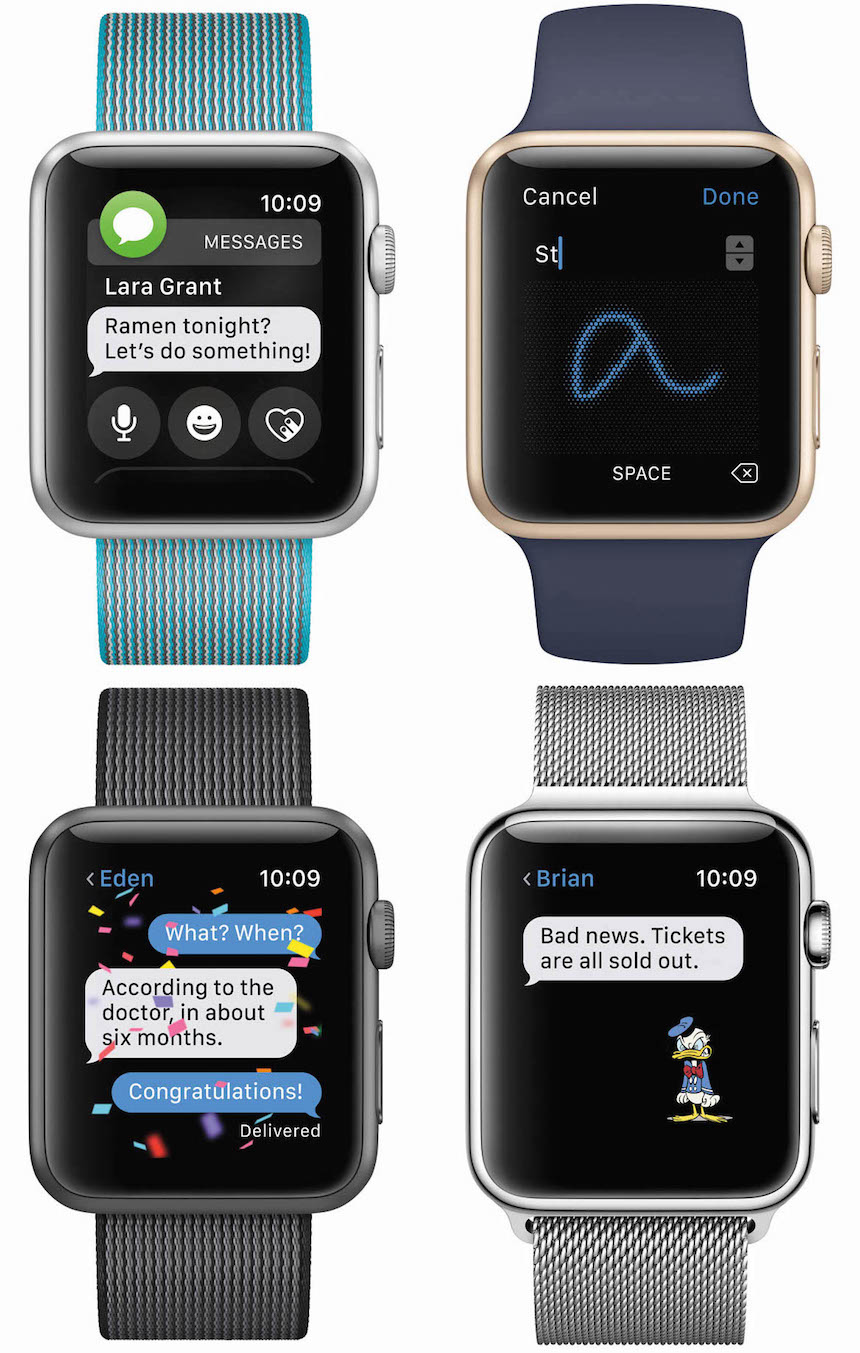
Apple designed a lot of new faces for the Apple Watch in WatchOS 3, and that is interesting since I’ve personally long awaited a more robust selection of watch faces for the device. Apple hasn’t gone so far as to allow third-party developers to create their own faces, but starting with WatchOS 2, Apple began to allow developers to have access to complications within existing watch faces. For WatchOS 3 Apple debuts new faces (including Minnie Mouse to go along with Mickey Mouse) and many new faces dedicated to fitness and activity tracking). Also exciting is a new feature designed to allow people to quickly switch between favorite faces – which is currently not as simple or easy as it can be.
Apple did not mention anything about battery life or communication performance for WatchOS 3. Apple is largely speculated to offer direct WiFi or mobile data connection for the Apple Watch 2 without having to connect to a host iPhone device. We aren’t there yet, but Apple seems to be moving in that direction with some of the new features. One is an emergency calling feature which allows the Apple Watch to call 911 or local emergency services around the world by pressing the lower case button down for a few seconds. This also connects with Medical ID so that information can be sent to emergency medical personnel about the patient.
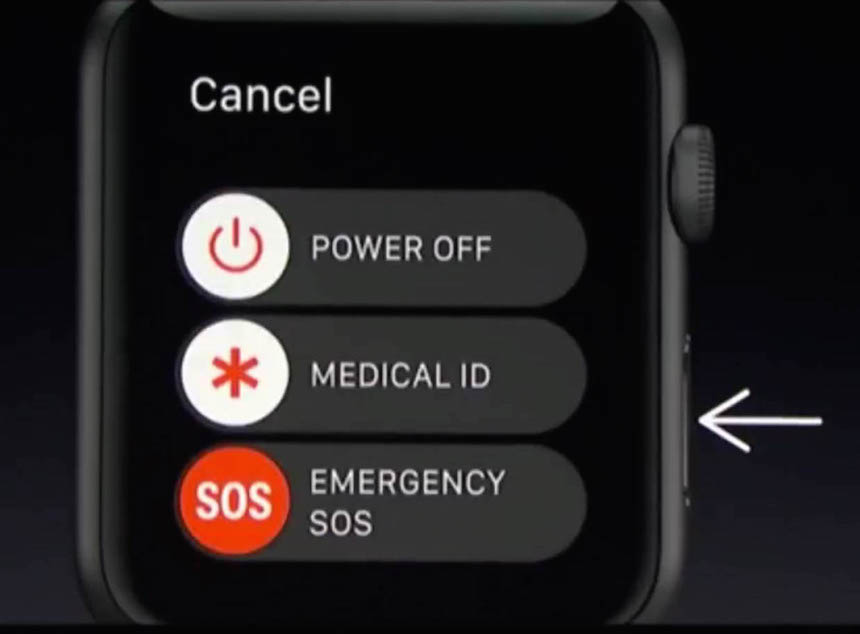
In regard to integration with other Apple devices, there was a bit of information here as well. An update to OS X (now called macOS) allows the Apple Watch to serve as an unlock device allowing MacBook users to bypass using a password. This is similar to how wearing a smartwatch can allow users to bypass using a password to access their phone.
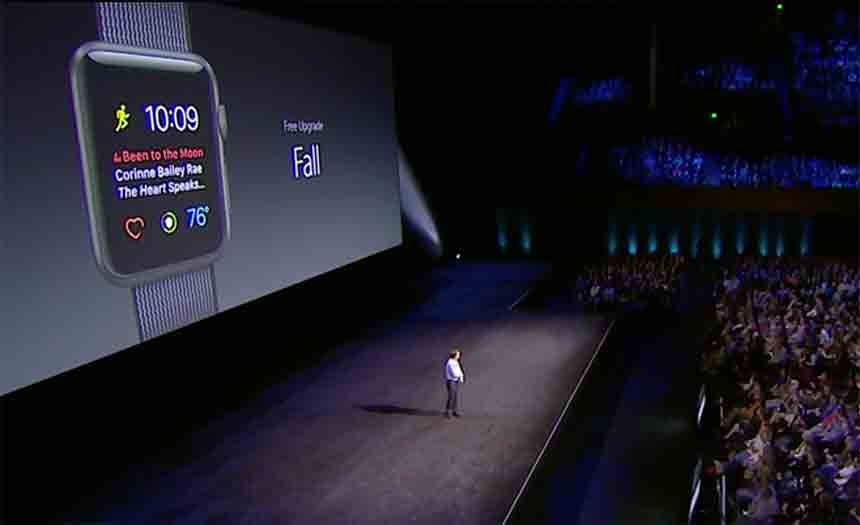
Apple is clearly intensely focused on how people are using the Apple Watch because they clearly want to know where to put their development efforts. Releasing a smartwatch like the Apple Watch into the market in 2015 was in many regards an experiment, as there wasn’t an established user experience or set of expectations. Apple continues to closely monitor consumer feedback and use of the Apple Watch in not only improving the performance of the device, but shifting how people use their smartwatch and its features. For now, it is clear that fitness tracking as well as convenience features is where Apple not only sees the most usage from wearers, but feels that its customers would benefit from further refinements.
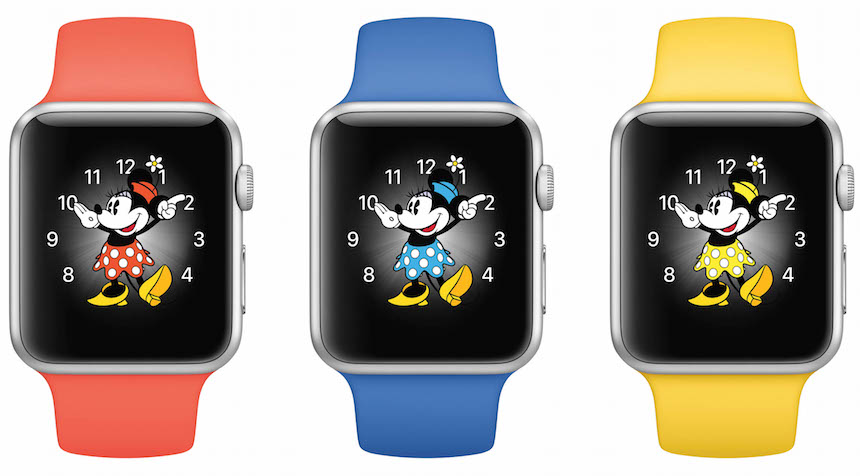
Following Mickey, in WatchOS 3 Minnie makes her debut on some of the selectable the Apple Watch dials
Consumers will have to keep waiting while Apple and other tech giants continue to struggle with current hardware limitations that naturally come from such a small device with such high expectations. Nevertheless, the Apple Watch seems to be a resounding success for consumers who bought one without having a timepiece that they were emotionally connected to. In my travels around the United States over the last three weeks, I could easily conclude that the most popular timepiece I saw on wrists was the Apple Watch.
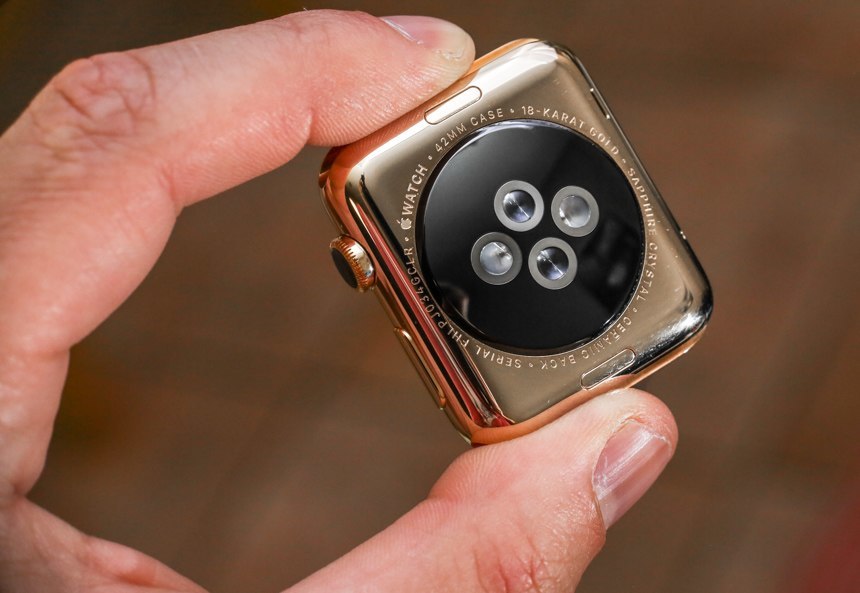
Of course, the traditional watch lover community will continue to be the most difficult target market for Apple, but that is a battle for another day. For now, Apple seems to be having a lot of success getting Apple Watches on the wrists of people who never wore a watch in the first place, or wore basic timepieces without having an emotional connection to them. This market is huge, and easily larger than the traditional watch enthusiast market. While people who wear mechanical watches will not likely be swayed by the promise of modern wearable technology today, we will continue to monitor and cover the advancements of smartwatches like the Apple Watch that are clearly making timepieces relevant to the general public once again. Look out for WatchOS 3 to be officially released in fall 2016 as a free update for all Apple Watches. apple.com/watch

